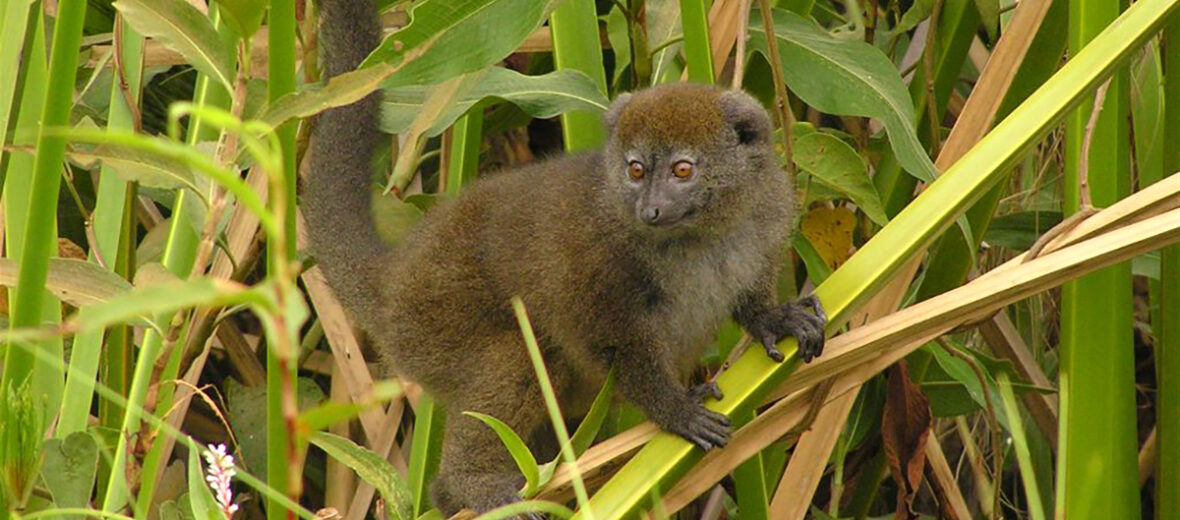
The Lac Alaotra bamboo lemur, aka Lac Alaotra gentle lemur, Alaotran bamboo lemur, Alaotran gentle lemur, Alaotra reed lemur, or the bandro, hails only from the island country of Madagascar. More specifically from the reed beds around Lac Alaotra, in northeastern Madagascar. Sadly, these lemurs face the threats of habitat destruction at the hands of the timber industry, agriculture, fires, and fire suppression; hunting; and trapping. The IUCN lists these critters are Critically Endangered, and their numbers are decreasing.
First the Stats…
Scientific name: Hapalemur alaotrensis
Weight: Up to 3.6 lbs.
Length: Up to 16 inches, plus up to a 16 inch tail
Lifespan: Up to 23 years
Now on to the Facts!
1.) They are the only known lemur to feed primarily on papyrus reeds. Even though their name suggests that they eat bamboo. These critters also feed on other reeds, and grasses as well. But papyrus reeds are their go-to.
2.) Their habitat is slowly being destroyed and replaced with rice patty fields.
3.) Lac Alaotra lemurs are also captured and sold for the exotic pet trade.
4.) Due to recent evidence, these lemurs are considered a subspecies of the eastern lesser bamboo lemur (Hapalemur griseus), not their own species.
5.) The potential building of a major drainage project in the region could drastically jeopardize this species’ existence.
But wait, there’s more on the Lac Alaotra bamboo lemur!
6.) These lemurs are also extensively hunted for meat. Upwards of a 1,000 of these lemurs are killed each year for bush meat.
7.) They dwell in small family groupings consisting of an adult male and female, plus their offspring.
Did you know…?
Troops are run by the female, as is the case with most prosimians (lemurs, lorises, bushbabies, and tarsiers).
8.) Females undergo up to a 140 day gestation (pregnancy) that yields a single infant.
9.) The female carries her newborn in her mouth for up to 3 months.
10.) Sometimes infants are carried by the father or older siblings.
But wait, there’s still more on the Lac Alaotra bamboo lemur!
11.) Infants begin eating solid food at around 6 weeks, and are fully weaned at around 20 weeks.
12.) At approximately 3 years of age, the males will leave the troop to start life on their own and look for a female to start their own troop.
Did you know…?
Snakes, fossas, owls, and eagles all prey on these lemurs.
13.) Females leave their troop at around 2 years old to start their own troop.
14.) These lemurs, like many others, are arboreal (spend most or all of their lives in trees).
15.) Communication is achieved via scent marking and vocalizations. Low growls are utilized to keep the troop together, while loud screams making a “creeee” sound are emitted when there is a threat.
Now a Short Lac Alaotra Bamboo Lemur Video!
Be sure to share & comment below! Also, check out the Critter Science YouTube channel. Videos added regularly!
Want to suggest a critter for me to write about? Let me know here.
Some source material acquired from: Wikipedia & IUCN
Photo credit: Jotaguru



